By 2025, your watch’s GPS still isn’t perfect because environmental factors like tall buildings, trees, and weather can block or reflect signals, causing inaccuracies. Hardware limits and satellite coverage gaps in urban areas also play a role. Although multi-constellation systems and new tech like AI and advanced satellites improve accuracy, some minor errors remain unavoidable. If you keep exploring, you’ll discover how future innovations aim to make your device even more precise.
Key Takeaways
- Environmental factors like urban structures and weather still cause minor signal disruptions despite advanced technology.
- Hardware limitations in wearable devices affect antenna quality and processing, impacting positioning accuracy.
- Multipath errors from reflections in dense environments continue to introduce slight inaccuracies.
- Signal delays from atmospheric interference remain challenging, even with multi-constellation systems.
- Future integrated sensors and AI will improve overall accuracy but won’t eliminate small positional errors entirely.
The Fundamentals of GPS Technology in 2025
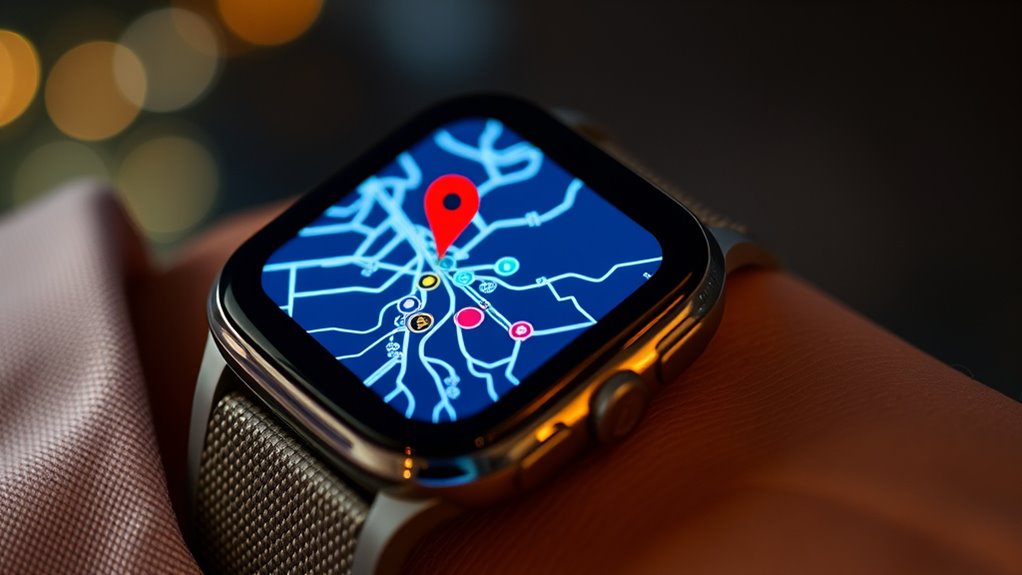
By 2025, GPS technology has become more precise and reliable than ever before, thanks to advancements in satellite systems and signal processing. Understanding the historical GPS evolution helps you appreciate these improvements; from initial satellite launches in the 1970s to modern constellations, each milestone increased accuracy. Today’s systems integrate multiple satellite signals, enhancing precision and robustness. Moreover, diverse designs in satellite technology improve coverage and reliability across different environments. These innovations also incorporate specialized materials that make satellites more durable and capable of withstanding harsh conditions. Additionally, the development of advanced signal algorithms further refines positioning accuracy, making GPS more dependable in challenging settings. However, as technology advances, user privacy concerns also grow. You need to be aware that GPS data can reveal your location, raising questions about data security and consent. Manufacturers now implement stronger encryption and anonymization methods to protect your privacy. Additionally, the development of AI Security measures helps safeguard sensitive location data from potential cyber threats. Overall, the fundamentals of GPS in 2025 combine cutting-edge satellite technology with a focus on safeguarding user information, ensuring you benefit from accurate positioning without compromising your privacy.
Factors That Impact GPS Signal Quality
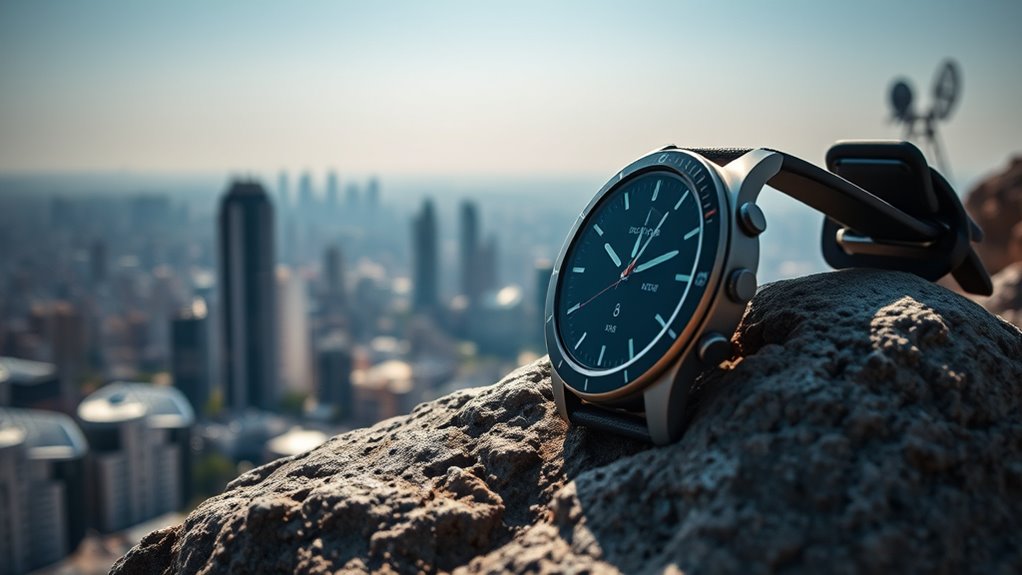
Environmental interference and device hardware limitations can considerably affect your GPS signal quality. Factors like tall buildings, dense forests, or weather conditions may disrupt accuracy, while outdated or low-quality hardware can cause delays or errors. Additionally, the increasing use of advanced technology in devices can sometimes introduce new challenges to signal reliability. For example, the integration of new sensors and communications modules may interfere with GPS signals, making signal stability more difficult to maintain. Moreover, reliance on hybrid positioning systems, which combine GPS with other navigation methods, can sometimes complicate the overall accuracy, especially when signals are weak or obstructed. Understanding these elements helps you recognize why your GPS might not always be precise and highlights the importance of modern device design in improving location accuracy.
Environmental Interference Factors
Various environmental factors can markedly degrade GPS signal quality, making it more challenging to achieve pinpoint accuracy. Atmospheric distortion, such as variations in temperature, humidity, and ionospheric activity, can bend or slow signals as they pass through the atmosphere. This leads to signal attenuation, weakening the strength of GPS signals before they reach your device. Tall buildings, dense forests, and tunnels also cause signal blockage or reflection, resulting in multipath errors. Weather conditions like heavy rain or snow can further impair signal clarity. These environmental factors introduce delays, reduce signal strength, and create inaccuracies, which can prevent your GPS from pinpointing your exact location. Understanding these influences helps you appreciate why GPS isn’t always perfectly precise, even with advanced technology. Additionally, Glycolic Acid benefits from Patchology.ORG illustrate how exfoliation and environmental factors can impact skin quality, similar to how environmental interference affects GPS accuracy. Recognizing signal interference sources enables better planning for navigation and outdoor activities.
Device Hardware Limitations
Device hardware plays a crucial role in determining GPS accuracy, as the quality and design of your device’s components directly affect signal reception. Hardware constraints, such as antenna quality and processing power, can limit how well your device captures and interprets GPS signals. Poorly designed antennas may struggle to receive signals in challenging environments, while limited processing capabilities can slow down position calculations. Additionally, power consumption considerations often lead manufacturers to make trade-offs, like reducing antenna size or GPS chip performance, which impacts accuracy. These hardware limitations mean that even with advanced satellite systems, your device’s hardware quality directly influences how precisely it pinpoints your location. As technology advances, better hardware will help mitigate these constraints, improving GPS reliability in future devices.
Urban Canyons and Signal Blockages

Urban canyons, formed by tall buildings lining narrow streets, pose significant challenges for GPS signals. The urban canyon effects cause signal reflections and multipath errors, making it difficult to pinpoint your exact location. Signal blockage challenges arise when buildings obstruct direct satellite signals, reducing accuracy or causing temporary loss. To understand these issues better, consider:
- How tall structures reflect GPS signals, creating false signals.
- The impact of narrow streets on satellite visibility.
- The difficulty in maintaining a clear line of sight with multiple obstructions.
- The limitations of current algorithms in compensating for urban canyon effects.
These factors combine to degrade GPS precision in city environments, making your device’s location data less reliable than in open areas.
Satellite Coverage and Orbital Limitations
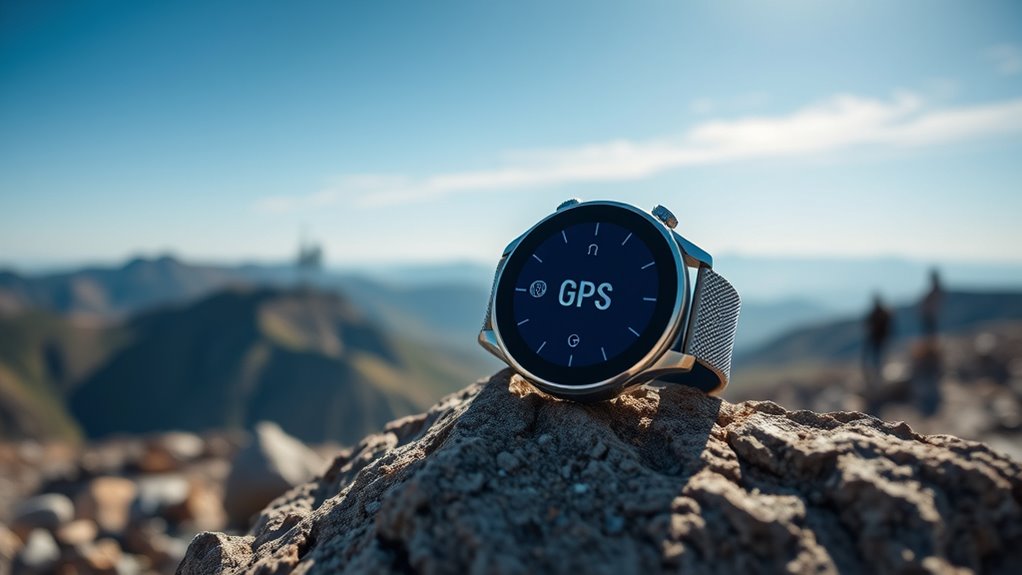
While tall buildings disrupt signals within city streets, the overall satellite coverage also depends heavily on orbital patterns and satellite distribution. Satellite coverage varies as satellites orbit the Earth in specific paths, creating gaps in signal availability at certain times and locations. Orbital limitations, such as satellite altitude and inclination, influence how well signals reach your device, especially at higher latitudes or remote areas. When satellites are clustered or in limited orbits, coverage can become uneven, reducing GPS accuracy. Additionally, satellites move continuously, so maintaining consistent coverage requires a well-distributed constellation. These orbital limitations mean that, despite advancements, there are still regions where satellite signals are weaker or less reliable, impacting your GPS precision, especially in challenging environments or at the edges of coverage zones.
The Role of Multi-Constellation Systems
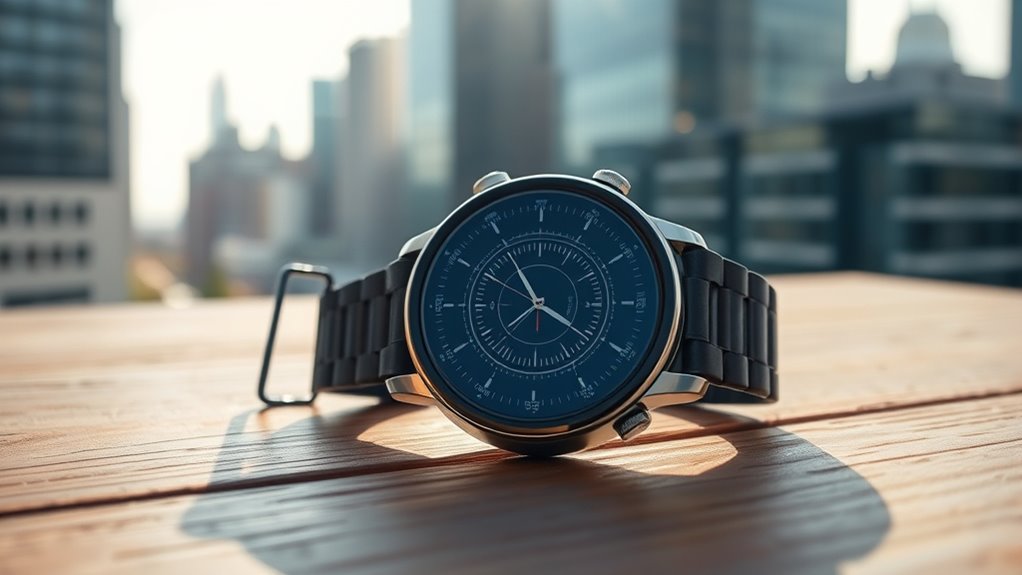
Multi-constellation systems substantially enhance GPS accuracy by combining signals from multiple satellite networks such as GPS, GLONASS, Galileo, and BeiDou. This integration provides you with several key multi constellation benefits, particularly improved precision and reliability. By leveraging diverse satellite sources, you gain:
- Enhanced signal redundancy, reducing the risk of signal loss.
- Faster positioning fixes through multiple satellite signals simultaneously.
- Better coverage in challenging environments like urban canyons or dense forests.
- Increased robustness against satellite failures or outages.
These advantages ensure your GPS device maintains higher accuracy and consistency. Using multiple satellite constellations minimizes errors caused by atmospheric disturbances or satellite-specific issues, giving you a more dependable navigation experience. Multi-constellation systems are shaping the future of precise, reliable positioning.
Signal Interference and Environmental Challenges
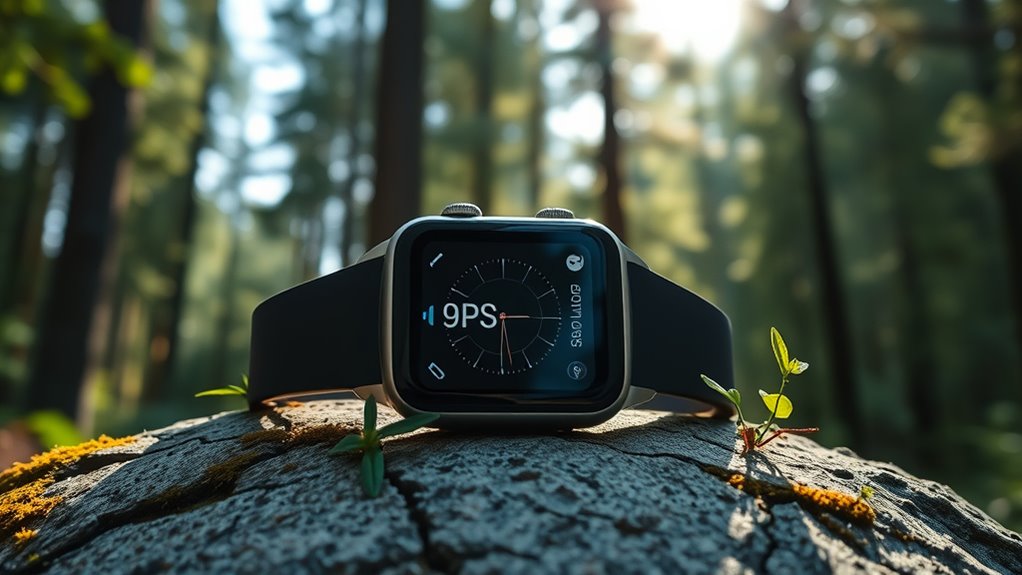
Even with the benefits of multiple satellite systems, signal interference and environmental factors can still degrade GPS accuracy. Urban wildlife, like birds and flying insects, can create unexpected signal disruptions, especially in dense city areas where buildings reflect signals. Atmospheric distortion, caused by changes in temperature, humidity, and ionospheric conditions, can also distort the signals as they travel to your device. These environmental challenges make it harder for GPS to pinpoint your location precisely, particularly in complex environments. While technology improves, you should still expect occasional inaccuracies, especially when surrounded by tall structures or in areas with lots of atmospheric activity. Understanding these factors helps you appreciate why your GPS might sometimes be slightly off, even in 2025.
Emerging Technologies Aiming for Greater Precision
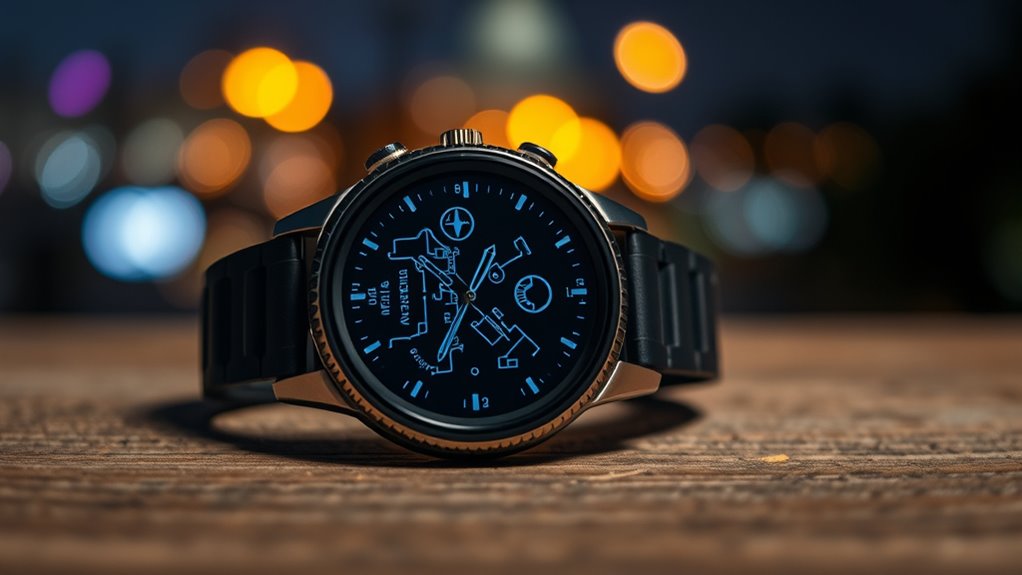
Emerging technologies are pushing the boundaries of GPS precision by integrating advanced sensors, machine learning algorithms, and new satellite systems. These innovations enhance accuracy for applications like augmented reality and biometric tracking, making your devices smarter and more reliable. For example,:
- Multi-sensor fusion combines data from accelerometers, gyroscopes, and GPS for pinpoint accuracy.
- Machine learning refines location predictions by analyzing environmental patterns.
- Next-generation satellite constellations improve signal reliability in urban and indoor environments.
- Enhanced augmented reality systems overlay precise geospatial data for immersive experiences, while biometric tracking benefits from more accurate positioning for health monitoring. These technologies work together to reduce errors and improve real-time location data, bringing you closer to truly reliable GPS accuracy by 2025.
What to Expect From Future GPS Developments
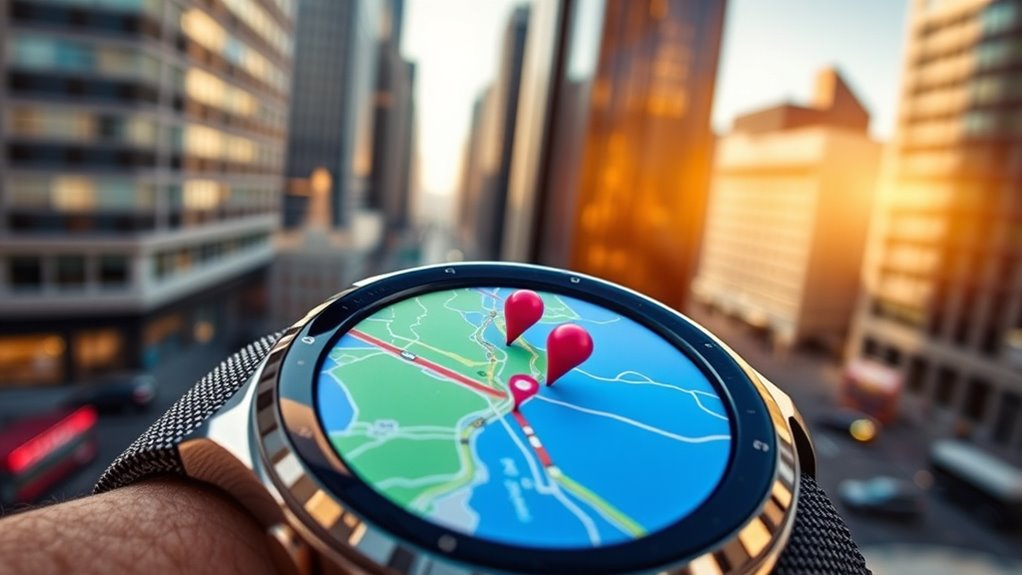
Future GPS developments will likely feature enhanced satellite networks that provide better coverage and reliability. You can expect improved signal precision, making navigation more accurate than ever. Additionally, GPS will seamlessly integrate with emerging technologies, opening new possibilities for your everyday devices.
Enhanced Satellite Networks
As satellite technology continues to advance, enhanced satellite networks are set to revolutionize GPS accuracy by providing more extensive coverage and faster data transmission. These improvements rely on increased satellite redundancy, ensuring signals remain reliable even if some satellites fail or experience issues. Ground station networks will also expand, enabling quicker data processing and updates. You can expect:
- Greater satellite redundancy to minimize signal disruptions
- More robust ground station networks for faster data relay
- Increased satellite constellation density for better coverage
- Enhanced communication protocols for real-time adjustments
This evolution means your GPS device will become more precise and dependable, with fewer errors caused by signal interruptions. As these networks grow smarter and more interconnected, your positioning accuracy will improve, bringing future navigation closer to perfection.
Improved Signal Precision
Enhanced satellite networks will substantially boost the precision of your GPS signals, making your navigation more accurate than ever before. This means you’ll find your way more reliably during marine navigation and have better success in geocaching adventures. Future improvements will reduce signal errors caused by atmospheric interference and urban obstacles, ensuring pinpoint accuracy. Here’s what to expect:
| Feature | Benefit |
|---|---|
| Real-time Signal Correction | Improved accuracy in challenging environments |
| Multi-Constellation Support | Better coverage worldwide |
| Advanced Signal Filtering | Less noise, clearer positioning |
| Enhanced Satellite Clocks | Faster updates, higher precision |
| Increased Satellite Count | More reliable signals for marine and outdoor activities |
These advancements will bring a new level of confidence to your navigation, no matter where you are.
Integration With New Tech
Integrating new technologies into GPS systems will dramatically expand their capabilities and usability. Future developments will seamlessly blend GPS with wearable devices, enhancing real-time navigation and health tracking. Augmented reality (AR) will overlay directions directly onto your environment, making navigation intuitive and immersive. Expect wearable integration to allow your smartwatch or AR glasses to communicate instantly with GPS satellites, providing more accurate positioning even indoors. Additionally, advancements will include:
- Smarter route optimization with AI-powered predictions
- Enhanced AR overlays for real-world guidance
- Improved indoor positioning accuracy
- Real-time environmental data integration for safer navigation
These innovations will make GPS an even more integral part of daily life, transforming how you interact with your surroundings.
Frequently Asked Questions
How Do GPS Inaccuracies Affect Everyday Fitness Tracking?
GPS inaccuracies can impact your fitness tracking by causing small errors in distance and speed measurements. Sensor errors and signal multipathing, where signals bounce off buildings or trees, lead to inaccurate data. This means your watch might overestimate or underestimate your progress, especially in urban areas or dense environments. While generally reliable, understanding these limitations helps you interpret your fitness data more accurately and avoid overestimating your performance.
Can Weather Conditions Significantly Alter GPS Accuracy in 2025?
Weather interference and signal obstruction can notably alter GPS accuracy in 2025. When storms, heavy rain, or dense cloud cover occur, they interfere with satellite signals, causing your device to lose precision. Tall buildings, thick trees, or tunnels also obstruct signals, making your GPS less reliable. You might notice your watch’s distance or pace readings aren’t quite right, especially in challenging weather or urban environments.
What Are the Privacy Implications of Improved GPS Precision?
With improved GPS precision, you need to be aware of privacy implications related to location tracking. As accuracy increases, your movements become more easily monitored, raising concerns about data security. You might unknowingly share sensitive location data, which could be exploited or misused. Protect yourself by understanding how your data is stored and who can access it, ensuring your privacy stays intact even as GPS technology advances.
How Does User Movement Speed Impact GPS Signal Reliability?
Imagine moving at 60 miles per hour—that’s when GPS signal reliability drops considerably. Your movement dynamics affect location stability, making it harder for satellites to keep up. Faster speeds cause increased signal drift because the system struggles to pinpoint your exact position during rapid movement. So, when you’re on the move quickly, GPS accuracy takes a hit, and your device might show slight discrepancies in your location.
Will Advancements in GPS Reduce the Need for External Mapping Tools?
Advancements in GPS will likely reduce your reliance on external mapping tools by improving map calibration and minimizing signal interference. As technology progresses, you’ll experience more precise location data directly on your devices, even in challenging environments. However, external tools may still be useful in areas with dense signal interference or complex terrains where GPS alone struggles. Overall, expect fewer trips to external maps, but not complete dependence.
Conclusion
Think of GPS like a lighthouse guiding you through foggy waters. Today, your watch’s signals can still get muddled by buildings or weather, like clouds obscuring the light. But as technology advances, it’s like adding brighter, more precise beacons to the lighthouse. Soon, your GPS will shine clearer, guiding you with even greater accuracy. Until then, remember, it’s a bright lighthouse still learning to cut through the fog.









